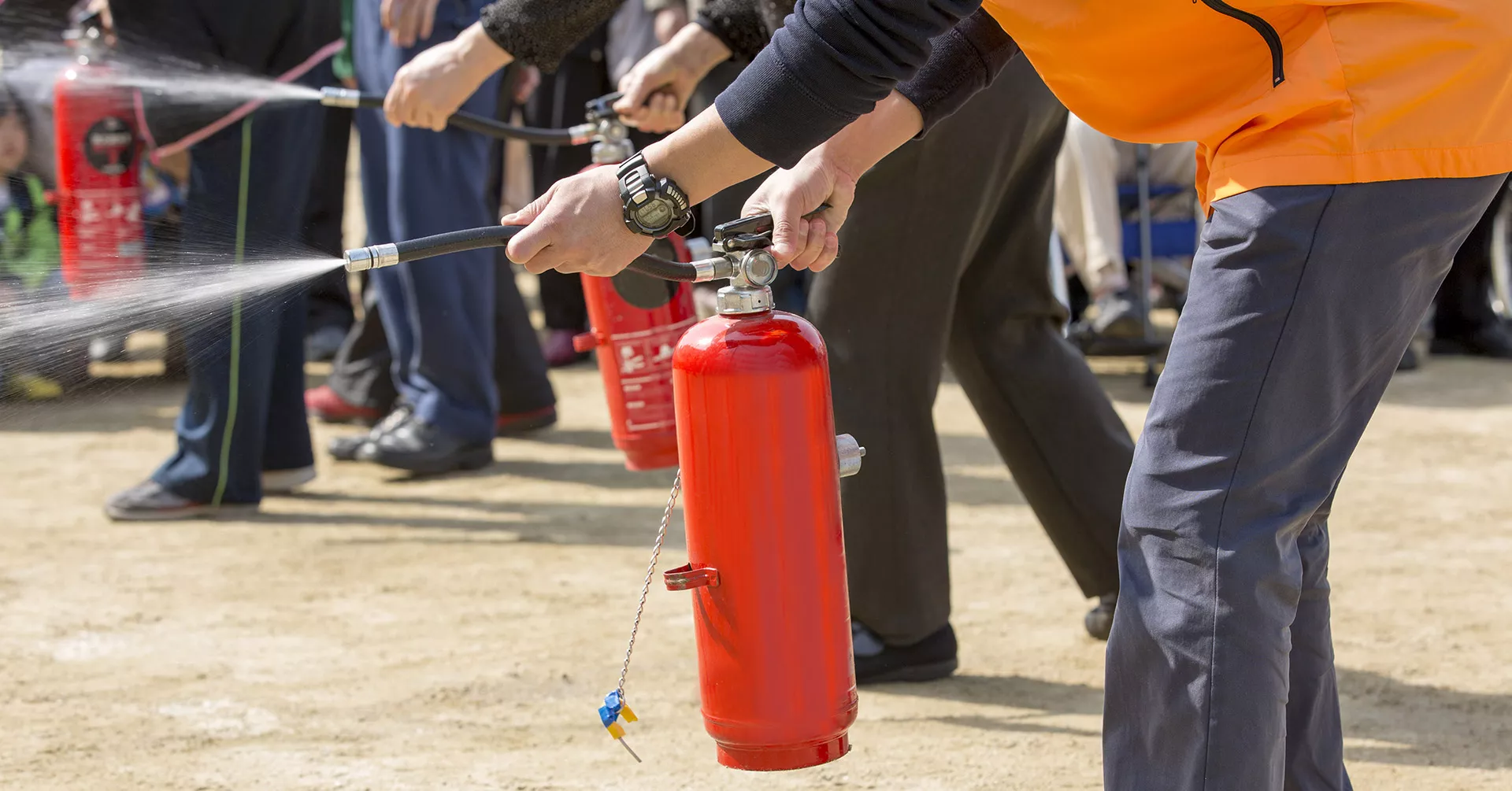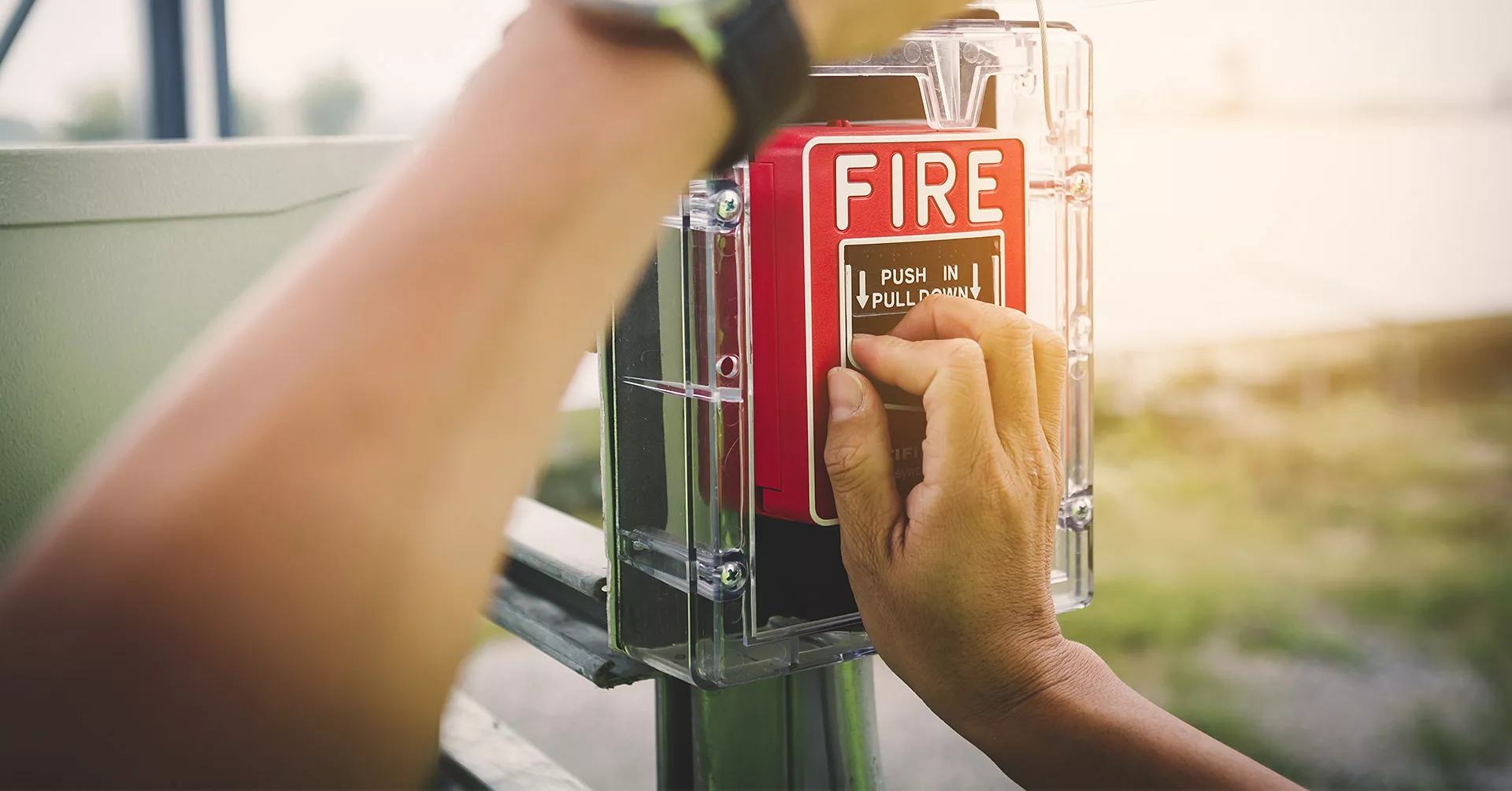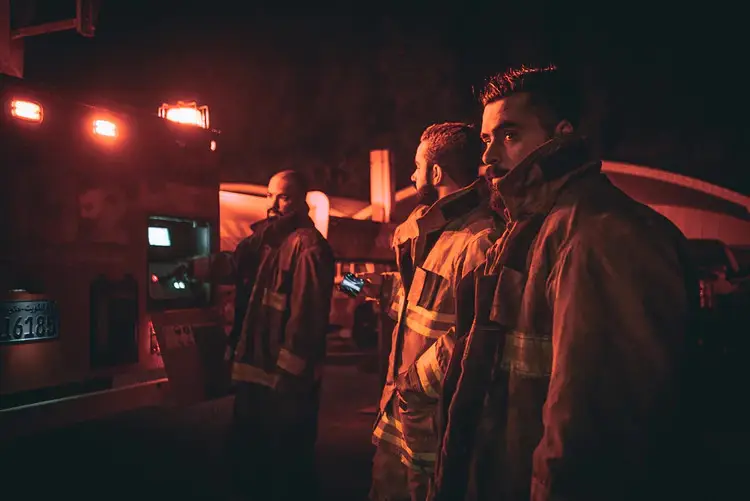Don’t wait for the alarm. Learn how a fire risk assessment can stop disasters before they start.
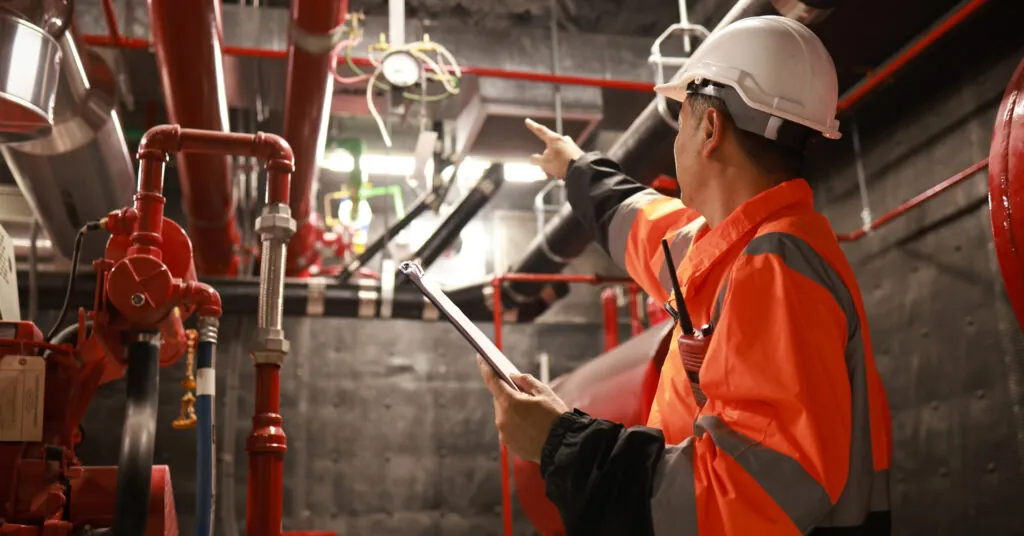
Fire Risk Assessments: How to Stop Hazards Before They Spark
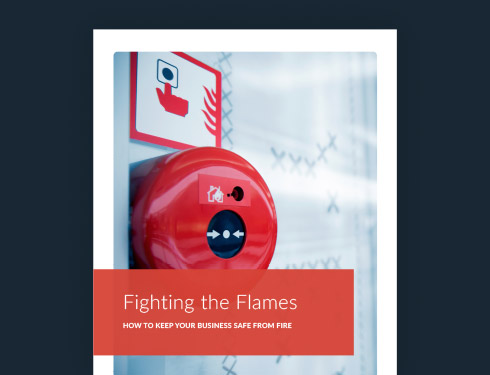
Before a fire becomes a full-blown emergency, it usually starts with something small that gets overlooked: a coffee maker left on in the break room, an overloaded power strip under someone’s desk, boxes stacked too close to a space heater. These everyday oversights can escalate fast, especially in workplaces that haven’t conducted a proper fire risk assessment or implemented effective fire safety procedures as part of their overall health and safety programs.
The problem is more common than you might think. One U.K. survey found that 38% of businesses don’t have suitable fire risk assessments in place. That means more than a third of companies operate without a clear understanding of their fire hazards or the prevention measures needed to reduce them.
A fire isn’t just a safety issue—it’s a business risk. It can endanger lives, damage property, disrupt operations, and lead to costly fines or lawsuits. Fortunately, a fire safety risk assessment helps you get ahead of those threats.
In this post, we’ll walk through what a fire risk assessment entails, why it’s an essential part of fire safety management, and how to approach it to protect your people and operations.
How to Keep Your Business Safe From Fires
What Is a Fire Risk Assessment?
A fire risk assessment helps identify potential fire hazards, determine the risk of a fire starting, understand who may be impacted, and outline the steps needed to make things safer. An assessment is essential for organizations to prevent fires, manage safety, and comply with regulations.
An assessment looks at both hazards and risks—terms that are often used interchangeably but mean very different things in the context of fire safety:
- Hazard: Something with the potential to cause harm (Example: Cleaning chemicals stored too close to a water heater in a utility closet.)
- Risk: The likelihood of a fire starting and how severe the impact could be (Example: The chance that heat or a spark could ignite the chemicals, leading to a fire that endangers nearby staff.)
Many organizations follow guidance from the National Fire Protection Association (NFPA), which sets widely recognized standards for fire safety. NFPA 1600, for example, provides a comprehensive framework for building emergency management and continuity programs. While not legally required, it’s widely considered a best practice across industries.
What have 100 years of fire prevention taught us?
Listen to the NFPA’s Brian O’Connor break it down on this episode of The Employee Safety Podcast.
In many sectors, fire risk assessments aren’t optional—they’re part of an employer’s legal duty of care to maintain a safe workplace. OSHA regulations, along with local fire codes and building standards, require businesses to identify fire hazards, keep protection systems in working order, train employees, and document their safety practices.
Neglecting these responsibilities can expose you to fines, resulting in legal liability, reputational damage, or even business shutdowns. A well-documented fire risk assessment shows due diligence, keeps your organization compliant, and most importantly, protects your people.
The goal is to reduce the risk of fire wherever possible and ensure that your team is ready to respond if one does break out.
Why Conduct a Fire Assessment?
A fire risk assessment is one of the simplest, most cost-effective ways to stop everyday hazards from becoming emergencies and to learn from past fire incidents that may have exposed vulnerabilities. A thorough fire risk assessment helps your organization protect life safety, safeguard property, and maintain compliance.
- Protect lives by identifying hazards before they cause harm
- Stay compliant with OSHA regulations and local fire codes
- Lower insurance costs by demonstrating proactive risk management
- Maintain business continuity by avoiding costly disruptions or shutdowns
Skipping a fire risk assessment can have serious consequences. More than 16,000 fires break out in U.S. offices and stores each year, causing nearly $1 billion in direct property damage. But the impact extends far beyond physical damage. Fires can result in fines, lawsuits, injuries, fatalities, and a loss of trust among employees and customers. In industries where downtime equates to lost revenue—like manufacturing, logistics, or healthcare—even a small fire can have a massive ripple effect on operations.
Fire risk assessments aren’t just a check-box compliance exercise. They’re a practical, proven way to protect your people, safeguard your assets, and keep your business running smoothly.
Who Should Conduct a Fire Assessment?
A fire risk assessment should always be carried out by someone with the training, knowledge, and experience to spot fire hazards, assess risk, and recommend practical ways to reduce it.
Depending on your organization’s size and complexity, a competent fire risk assessor could be:
- A trained internal employee who handles safety or facilities tasks
- An external fire safety consultant or risk professional
- A designated “responsible person” who oversees fire safety compliance for your site
Larger organizations or higher-risk environments—like warehouses, labs, or healthcare facilities—often benefit from bringing in an outside expert with extensive fire safety experience. In smaller or lower-risk settings, someone in-house may be suitable as long as they meet the criteria of a competent person and understand local fire codes.
Regardless of who performs the assessment, they need to take a thorough, objective look at your fire risks, and they need the authority to implement changes that improve safety.
The Fire Risk Assessment Process: Step-by-Step
A fire risk assessment doesn’t have to be complicated, but it should follow a structured approach. Consider using a risk assessment checklist to ensure you don’t overlook key areas.
Here are five key steps to guide you:
1. Identify fire hazards
Look for anything that could start a fire or make one worse, including:
- Ignition sources: Heaters, electrical equipment, overloaded outlets, machinery
- Fuel sources: Paper, packaging, furniture, flammable liquids, chemicals, and other flammable materials
- Oxygen sources: HVAC systems, oxidizing agents, compressed gas cylinders
Inspect any known sources of ignition regularly, and continue to identify additional sources.
2. Identify people at risk
Consider who could be affected if a fire breaks out—not just the number of people, but who and where they are. For example:
- Employees working alone, after hours, or in remote areas
- Visitors or customers unfamiliar with your building layout
- Individuals with limited mobility, vision, or hearing
- Temporary workers or contractors who may not be fully trained
3. Evaluate, remove, or reduce the risks
Assess how your current fire safety measures are working.
- Are alarms functioning properly?
- Are exits marked and easy to access?
- Are fire extinguishers, sprinklers, and fire-fighting equipment up to code and maintained on schedule?
Address any issues by upgrading equipment, modifying procedures, or retraining staff as needed.
4. Record your findings and create an action plan
Log what hazards you found, who could be affected, and the actions needed to fix the issues. Establish responsibilities, deadlines, and specific fire precautions to prioritize.
5. Review and update regularly
Fire risks aren’t static. New equipment, layout changes, staffing adjustments, or even seasonal shifts in operations can introduce new hazards. Build regular review dates into your safety calendar, and continually reassess after any significant changes.
What Should a Fire Risk Assessment Cover?
Spotting surface-level hazards is a start, but a proper fire risk assessment goes deeper. Whether you’re starting from scratch or using a fire risk assessment template, make sure it covers these four key areas:
Fire prevention and detection
A fire safety assessment should examine your fire prevention measures—how well your workplace is set up to avoid fires in the first place. This includes safe equipment use, proper storage of combustible materials, and regular upkeep. The assessment should also check that fire alarms, detectors, sprinklers, and suppression systems are in place, working correctly, and appropriate for the space.
Emergency planning and evacuation
An effective evacuation plan ensures people get out quickly and safely during a fire. Your assessment should review whether escape routes are marked and free of obstructions, exits open easily and comply with code, and fire doors function properly. It should also evaluate whether the plan is clear and accessible and accounts for everyone on-site, including visitors and those with disabilities needing assistance. It’s also a good idea to coordinate with your local fire and rescue service to ensure your evacuation procedures align with their emergency response protocols.
Training and communication
Employees need to be prepared before an emergency happens. Your assessment should verify that everyone knows how to report a fire, where to go, and what to do in the event of a fire. It should also ensure that fire safety training is current and accessible to all staff, not just full-time employees.
Documentation and compliance
A fire risk assessment should examine how fire safety efforts are documented, including assessment records, equipment inspections, training sessions, and fire drills. Clear, consistent documentation supports regulatory compliance and reflects a proactive approach to managing fire safety risk.
How Often Should You Review Your Fire Safety Risk Assessment?
A fire risk assessment provides a snapshot in time, but fire risks don’t stand still. As your operations grow and change, so do the conditions that could lead to a fire. That’s why ongoing review is just as critical as the initial assessment.
As a general rule, review and update your fire risk assessment:
- At least once a year, as part of your annual safety audit
- Any time your layout or operations change, such as after renovations or equipment upgrades
- After an incident or near-miss, identifying what went wrong and how to prevent it in the future
- When staffing changes significantly, especially if you add employees who may be at greater risk
- When fire codes or safety regulations are updated to make sure you’re still compliant
Fire safety isn’t a set-it-and-forget-it process. As the NFPA’s Brian O’Connor explains, “Change management is a huge thing in fire safety. You may have a solid plan in place, but everything is changing constantly, and that can introduce new hazards you haven’t accounted for.” Keeping your assessment current ensures your safety procedures stay relevant, effective, and ready when you need them most.
FAQ
- What are the legal requirements for a fire risk assessment? Requirements vary by state or municipality, but most employers must implement fire protection and prevention measures. Under OSHA regulations, U.S. businesses are required to identify fire hazards, maintain clear exits, train employees on fire safety, and keep their emergency plans up to date. Local fire codes may also require routine inspections and written documentation to stay compliant. In addition to OSHA and local fire codes, your local government may have specific requirements for documentation, inspections, or emergency planning.
For U.K. businesses, you can find detailed guidance on completing a fire risk assessment at gov.uk, which outlines legal obligations and practical steps for compliance. - What are the penalties for non-compliance? Violating fire safety rules can lead to fines from OSHA and local code enforcement. If someone is harmed and the employer is found negligent, lawsuits and even criminal charges are possible. Even without an incident, failing an inspection can still result in steep fines or a forced closure.
- What documentation is required for a fire risk assessment? At a minimum, you should document the following:
- Identified fire hazards and people at risk
- Existing fire safety controls and any gaps
- A corrective action plan with owners and deadlines
- Logs of fire drills, staff training, and equipment checks
Records should be up to date and easily accessible, especially during inspections or audits. Proper documentation helps show you're compliant with safety regulations and holding your team accountable. - Do fire risk assessments apply to remote or hybrid workplaces? Yes—employers still have a duty of care, even when teams are working remotely or in a hybrid setting. While fire risk assessments primarily focus on physical office spaces, the safety of home offices should also be considered. This may include providing clear guidance on the safe use of electrical equipment, avoiding overloaded outlets, and knowing how to respond in an emergency. For hybrid teams, make sure your fire safety plan covers every location where work regularly happens.
- How often should you conduct fire safety training and fire drills? New employees should receive fire safety training during onboarding, with refreshers provided annually. Fire drills should happen at least once a year, or more often in high-risk environments. Use drills as an opportunity to test evacuation plans and strengthen your emergency response strategy.
Don’t Let Fire Safety Be Your Weak Spot
In emergency planning, the most significant threats aren’t always the most obvious. Major events like hurricanes and earthquakes may be what grabs headlines, but the everyday risks building up unnoticed in the workplace are often more likely—and just as dangerous.
That’s why fire risk assessments are critical. They reveal the everyday hazards hiding in plain sight, before they spark a much bigger crisis.
However, even the best fire safety plan can fall short without a way to quickly notify employees and coordinate a response. Emergency communication platforms like AlertMedia let you instantly alert employees, coordinate drills and evacuations, and keep everyone informed during a fire. With two-way messaging, mobile alerts, and real-time check-ins, your team stays connected when it matters most.
Every organization faces fire risk, but those that plan are better equipped to avoid disaster. Your best defense is a proactive approach involving regular fire safety risk assessments, effective prevention strategies, and reliable emergency communication.
Ready to turn fire risk into readiness? Get the free Workplace Fire Safety Guide for expert strategies to help you prevent, respond to, and recover from a fire.

